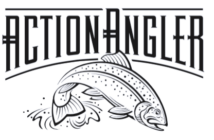From ASA and Southwick Associates:
A new report about recreational fishing in the U.S. found that anglers in the Midwest and Northeast had the lowest drop-out rate compared to anglers in other parts of the country. The report examined fishing license purchases in the Northeast, Midwest, Southeast and West.
This, and other findings related to fishing participation are explained in “A Snapshot of the U.S. Angler Population by Region,” the second in a series of studies produced for the American Sportfishing Association (ASA) by Southwick Associates that sheds new light on anglers’ fishing habits and loyalty to the sport.
The study reveals that close to half of all fishing license buyers in any given year do not renew their licenses the following year. However, the overall number of participants remains quite stable from year to year, at around 46 million, because about the same number of people both drop-in and drop-out of the sport from year to year.
“The new report underscores some of the challenges we already know about, but it also gives us more specific information to help pinpoint factors that keep people fishing, and that’s what we need going forward,” said ASA President and CEO Mike Nussman. “What keeps anglers fishing in the Midwest and not in the Southeast is information we can use to improve our marketing efforts to anglers who tend to lapse more.”
This is important information for state fisheries agencies and the Recreational Boating & Fishing Foundation, organizations taking the lead for the broader sportfishing community on growing participation. Their strategy, called “R3,” includes targeted marketing to recruit, retain and reactivate anglers. The overall goal is to reduce the amount of “churn,” a term that refers to anglers’ transitioning in and out of the sport from year to year.
What’s new?
The analysis includes a closer look at sportfishing participation, churn rates among various demographic groups, and fishing license purchasing habits among recruited, retained and reactivated anglers.
While there were some significant differences among regions, in each region the analysis was consistent with what was found nationally: women, young people, and those who live in urban communities are more likely to lapse in their fishing from year to year.
Report highlights
Participation is growing slightly in about one-third of the states. Between 2004 and 2013, 17 states experienced growth in the number of licensed anglers while the rest showed reductions. Most of the states showing growth are in the West and Southeast.
The West attracts the most non-resident anglers. Nonresidents comprise as much as 29 percent (West) and as little as 19 percent (Midwest and Southeast) of the licensed angler population (it’s 20 percent in the Northeast). Regardless of region, roughly 70 percent of all licensed non-resident anglers will buy a license in the same state in just one out of five years, though they may buy in other states in these other years.
Anglers are more avid in the Northeast and Midwest. More than 20 percent of anglers purchased a license five out of five years in the Northeast and Midwest—compared to just 8 percent and 16 percent of anglers in the Southeast and West, respectively.
The annual churn rate is highest in the Southeast and lowest in the Midwest. In the Southeast, the average annual churn rate is highest, at 53 percent, while its lowest, 28 percent, in the Midwest, considerably less than the national rate of 46 percent. The rate is 39 percent in the West and 33 percent in the Northeast.
Regardless of region, the churn rate is highest among younger anglers. The average annual churn rate is highest, with a range of 37-63 percent across all four regions, among licensed anglers between the ages of 18 and 24. Licensed anglers aged 55 to 64 years old have the lowest churn rate of all age groups, with a range of 22-46 percent across all four regions. Nationally, annual churn rates by age group fall within these regional ranges.
Regardless of region, the churn rate is higher among women. The average annual churn rate among women is highest in the Southeast, where 64 percent of female anglers lapse in their fishing license renewals from year to year. It’s lowest among women in the Midwest, at 41 percent. The rate is 48 percent in the Northeast and 50 percent in the West. Nationally, the rate is about 55 percent—about 13 percent higher than the churn rate for men.
Regardless of region, urban anglers have a higher churn rate. The churn rate ranges from 34-60 percent for urban anglers across all four regions, from 30-55 percent for those residing in suburban communities, and from 24-46 percent for those in rural communities. The national churn rate in urban communities falls within this regional range; however, rural anglers’ churn rate ranges lower than the national rate in the Midwest, Northeast, and West.
Southwick Associates compiled and studied fishing license data over a 10-year period, from 2004-2013, and a five-year period, from 2009-2013, from 12 states (CO, FL, GA, ME, MI, MN, MS, MT, NH, NY, UT, and WI) to provide a regionally and nationally representative portrait of anglers for this and future reports in the series. Three states were selected from within each of the four geographic areas of the country—the Northeast, Midwest, Southeast, and West—to provide regional representation.
The American Sportfishing Association (ASA) is the sportfishing industry’s trade association committed to representing the interests of the entire sportfishing community. We give the industry a unified voice, speaking out on behalf of sportfishing and boating industries, state and federal natural resource agencies, conservation organizations, angler advocacy groups and outdoor journalists when emerging laws and policies could significantly affect sportfishing business or sportfishing itself. ASA invests in long-term ventures to ensure the industry will remain strong and prosperous, as well as safeguard and promote the enduring social, economic and conservation values of sportfishing in America. ASA also gives America’s 46 million anglers a voice in policy decisions that affect their ability to sustainably fish on our nation’s waterways through KeepAmericaFishing™, our angler advocacy campaign. America’s anglers generate over $48 billion in retail sales with a $115 billion impact on the nation’s economy creating employment for more than 828,000 people.



